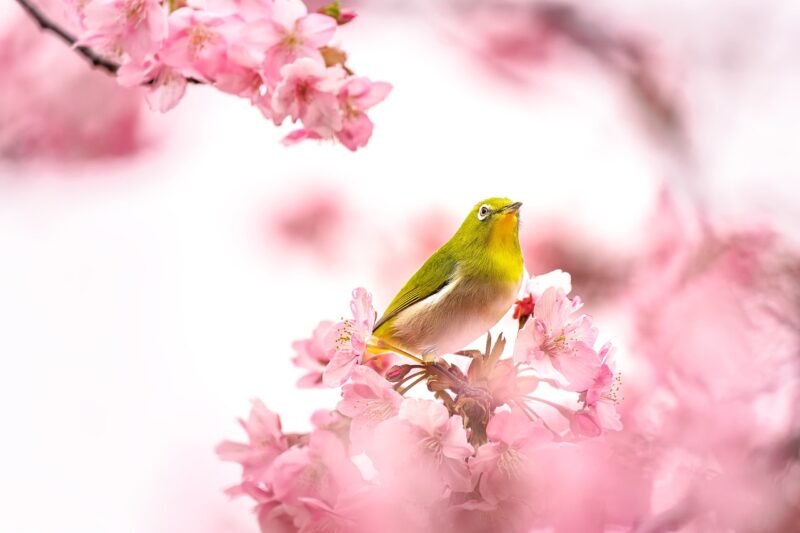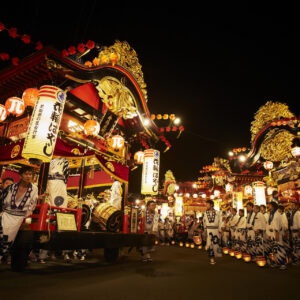
What does "Shinobu Mochizuri" mean? Introducing related spots and folk tales [Fukushima Prefecture]
table of contents
you "Shinobu Mochizuri" ? It's a word that often appears in the world of waka poetry, but it's actually a word that has a connection to what is now Fukushima City, Fukushima Prefecture. While it's no longer seen in everyday life these days, it is the name of a local product that was so popular in the capital that its name remains in waka poetry, folk tales, and historical sites over the years.
This time, we will introduce a part of Fukushima's history using Shinobu Mochizuri as a keyword
First of all, what does "Shinobu Mochizuri" mean?

"The Shinobu Mojizuri of Michinoku, who is it that has caused the situation to become chaotic? It is not I who have come to this conclusion."
This is a poem by Kawara Sadaijin, included in the Ogura Hyakunin Isshu. The Ogura Hyakunin Isshu is a collection of poems that includes one excellent poem each from one hundred poets. "Shinobu Mojizuri" mean here?
Shinobu Mochizuri (Shinobu Zuri) is actually the name of a dyeing technique. Shinobu Mochizuri, which was once made in Shinobu County (now Fukushima City), was a popular item even in the capital. Dyes extracted from grasses are applied to stones, and then cloth is pressed against them to create patterns
The opening poem by Minister of the Left, Kawara, has the following meaning:
"Just like the disordered patterns on the Shinobu Mochizuri crafted in Michinoku, it is none other than you that cause my heart to be in disarray."
Shinobu Mochizuri patterns are used to express his own feelings of love. Shinobu Mochizuri patterns are basically a series of diamonds. However, they are not as neat as geometric patterns, and their irregular arrangement gives them a feel that is reminiscent of modern art
The fact that this tanka was selected as a masterpiece in the Hyakunin Isshu suggests that Shinobu Mochizuri was famous in the capital at the time. Furthermore, since Shinobu Mochizuri frequently appears as a subject for waka poetry, even after Shinobu Mochizuri itself was no longer produced, its name remained in posterity through literature
Matsuo Basho visited Shinobu, he composed the poem "At the hands of those who pick up the seedlings, the Shinobu-zuri of old" , "I wonder if the movements of the hands of those who are now planting rice still retain the Shinobu-zuri technique that was once performed in this area .") It can be seen that when Basho visited this area, he was thinking back to the time when Shinobu-zuri was made.
The folktale of Shinobu Mochizuri still remains in Fukushima City

In Fukushima City, there is a folktale called "Shinobu Mochizuri," which is a story related to the song by Kawahara Sadaijin introduced earlier
The folktale is as follows:
While traveling to Michinoku, Kawahara, the Left Minister, met a farmer near Bunchizuri in Shinobu.
It was dusk, so he asked for a place to stay for the night. The farmer
"I live here in Yamaguchi. I'll show you around."
Upon arriving, the farmer found himself in a landlord's house, a rare find in a mountain village.
The farmer was accompanied by a young maiden named Torame, who was incredibly beautiful and captivated Kawahara. However, due to his important position as Left Minister, he could not stay forever.
"No, no, I'm grateful for your kindness for so long. I'll return after my mission is complete. Please wait for me," Torame
replied, as he parted ways. However, no matter how long he waited, he received no news.
Whenever Torame felt sad, she would come to the Bunchizuri stone and say,
"Bunchizuri stone, starting today, I'll rub the surface of the stone with wheat grass for 100 days. Please make sure the face of the Left Minister appears." She
continued rubbing the stone every day.
Then, the stone began to shine and become like a mirror.
Her parents tried to dissuade Toranai, thinking she had lost her mind, but she was adamant and could not be stopped no matter what.
And so, on the 100th day of her vow, the face of the Minister of the Left appeared on the stone surface.
"Oh, I'm so happy,"
she cried, and collapsed. Her previous strains had compounded, and before she knew it, her illness had worsened.
Then, unexpectedly, a messenger arrived from the capital, bringing a gift from the Minister of the Left.
It also contained a waka poem: "
Michinoku no Nobuo mo zuri wa midare some shiwareranaku
" Toranai was delighted, holding the poem and gift close to her heart, and feeling as if it were a dream. However, her illness gradually worsened, and within a few days, she died alone in a village in Yamaguchi.
From Fukushima Folktales, Vol. 1, edited by Katahira Kozo (Miraisha, 2015).
Kawara Sadaijin , whose real name was Minamoto no Toru was a person from the Heian period. One theory is that Hikaru Genji, . Although he was the son of Emperor Saga, he left his royal status to become a vassal and served as Sadaijin. It is said that he came to be called Kawara Sadaijin because he established a mansion in Rokujogawara.
The story is about how Kawahara, the Minister of the Left, falls in love with Torajo, the daughter of a wealthy man, in the village of Shinobu, a place he visits during a trip to Michinoku. The waka poem introduced in the previous chapter is said to have been written by Kawahara for Torajo
In the story, Torana died without ever being reunited with Kawahara Sadaijin. However, the Mochizuri stone that Torana is said to have polished in hopes of meeting her beloved still remains in Fukushima City today
Bunchizuri Kannon Temple in Fukushima City, Fukushima Prefecture, the setting of the folktale

In the Yamaguchi district, located in the eastern part of Fukushima City, there is a historic site called Bunchizuri Kannon. As a place with connections to waka poetry, it has long been famous as a place visited by literary figures. Today, the site quietly conveys its history within the grounds of the Soto Zen temple, Fumon-in

Within the temple grounds, the "Mochizuri Stone" the "Tabō Pagoda" that has been designated an Important Cultural Property of Fukushima Prefecture "Denkōkaku" museum, which displays art and historical documents . The many historic sites create a solemn atmosphere. The area is also rich in natural surroundings, and in autumn you can see beautiful autumn leaves, making it a great place to enjoy strolling and taking photos.
If you have a goshuincho (stamp book), don't forget to bring it with you when you visit
Bunchisuri Kannon <Information>
- Name: Bunchisuri Kannon
- Address: 70 Bunchizuri, Yamaguchi, Fukushima City, Fukushima Prefecture, 960-8202
- Phone number: 024-535-1471
- Visiting hours: 9:00-17:00 (until 16:00 in winter)
- Official URL: https://antouin.com/index.html
Google Map
Sweets named after Shinobu Mochizuri are also sold
As an aside, a popular snack in Fukushima is also named after Mochizuri
"Kurumi Yubeshi Mochizuri" sold by Kashiwaya . This snack is a classic that has become a popular souvenir, gift, and everyday snack. You can also find it in supermarkets across the prefecture. If you live in Fukushima Prefecture, you've surely seen it at least once.
The vibrantly colored and charming packaging has a soothing effect. Inside is a gently sweet and chewy "Yubeshi" filled with plenty of walnuts, making for a delightful texture. It is especially recommended for those who like chewy sweets, so if you see it, be sure to pick it up
Walnut Yubeshi Mochizuri <Information>
- Manufacturer: Kashiwaya Co., Ltd
- Website: https://www.usukawa.co.jp/products/mochizuri/
Google Map
summary
This time we delved into the word "Shinobu Mochizuri."
Originally the name of a dyed fabric, Shinobu Mochizuri was used in the world of elegant waka poetry, and its name remains in folk tales and historical sites today. Poets and writers who once visited this area must have also been reminded of the image of Shinobu Mochizuri
If you are a fan of literature, why not visit and trace the traces of history?






![[Kawauchi Village, Fukushima Prefecture] What is "Kanzarashiko" (cold powder) that is full of natural flavors? Explaining its appeal and recipes adpDSC_1636 (1)](https://jp.neft.asia/wp-content/uploads/2022/06/adpDSC_1636-1-150x150.jpg)
![[Oga Peninsula, Akita Prefecture] Meet the authentic Namahage! I went to Namahage Museum and Oga Shinzan Tradition Museum namahage](https://jp.neft.asia/wp-content/uploads/2023/05/namahage-150x150.jpg)
![The timber rocks in Shiraishi Obara are natural phenomena, and are spectacular spots with columnar joints! [Miyagi Prefecture] FE8E1C5D-891F-4A2B-B0BB-BB4536BF6858_105_c](https://jp.neft.asia/wp-content/uploads/2023/07/FE8E1C5D-891F-4A2B-B0BB-BB4536BF6858_1_105_c-150x150.jpeg)














